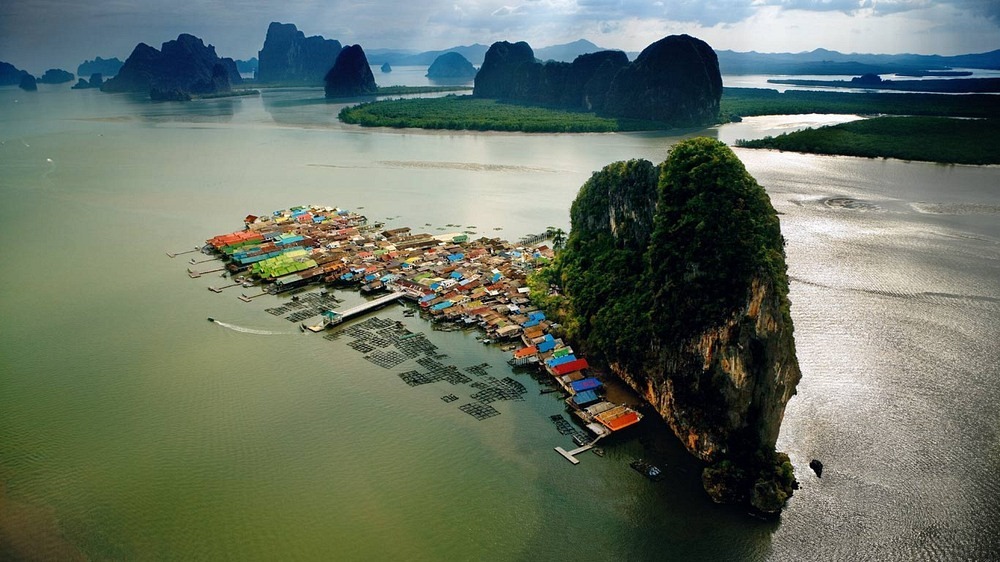Incredible floating village of Ko Panyi,
Thailand

Aerial view of Ko Panyi, fishing village in Phang Nga Province, Thailand. Photo credit: roadlessandy/instagram
There is a small village of Ko Panyi in Thailand, which consists
of hundreds of huts, houses and restaurants. A lot of fishermen built their
houses above the water level because it is nearest from see. It is a wonderful concept
of amazing houses. Nearly families and more than 1500 people live on Ko Panyi.
At this time, foreigners are not allowed to purchase their own
land in Thailand, but Toh Baboo and some other families have built their houses,
200 years ago they settled here from Indonesia. It is an Islamic village and
there is a mosque, a school, a large restaurant and many other facilities. Truism
became another source of income from some years.
Incredible floating village of Ko Panyi,
Thailand

Photo credit: thailandculturetravel.com
Incredible floating village of Ko Panyi,
Thailand

Aerial view of Ko Panyi, fishing village in Phang Nga Province, Thailand. Photo credit: Parshina Marina/Shutterstock
Incredible floating village of Ko Panyi,
Thailand

Photo credit: wsquared photography/Flickr
Incredible floating village of Ko Panyi,
Thailand
Photo credit: Sundays/Flickr
Incredible floating village of Ko Panyi,
Thailand

Photo credit: Sundays/Flickr
Incredible floating village of Ko Panyi,
Thailand
Photo credit: prateekb/Flickr
Incredible floating village of Ko Panyi,
Thailand

Photo credit: Dr. Thomas Liptak/Flickr
Incredible floating village of Ko Panyi,
Thailand

Ko Panyi, fishing village in Phang Nga Province, Thailand. Photo credit: Karina Lopatina/Shutterstock

No comments:
Post a Comment
Note: only a member of this blog may post a comment.